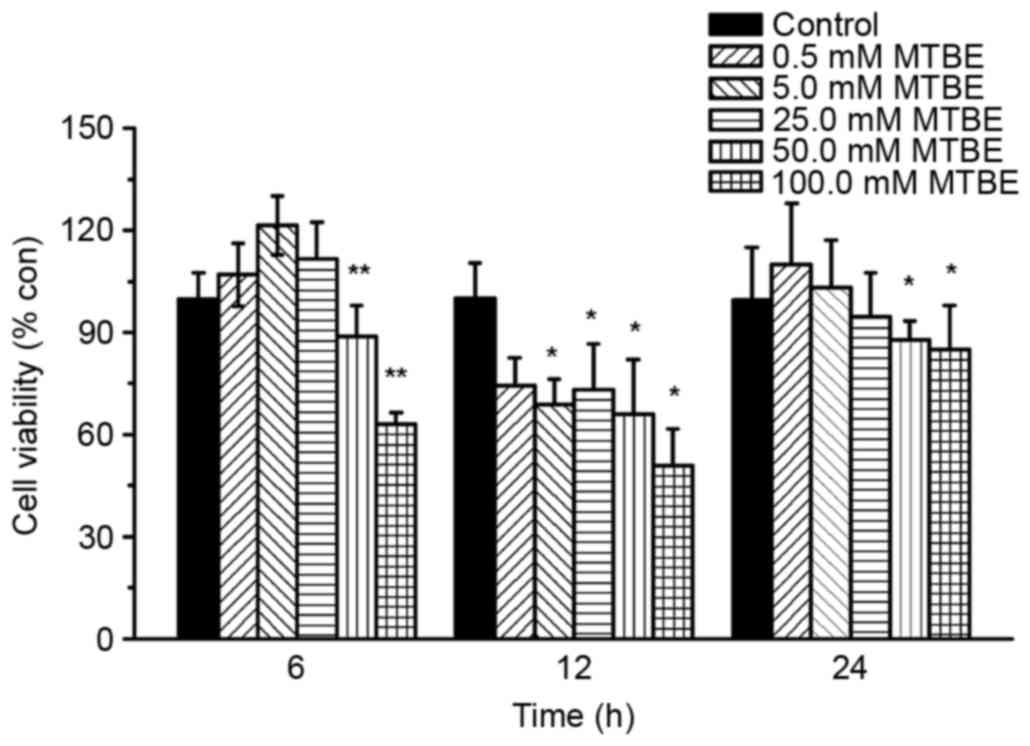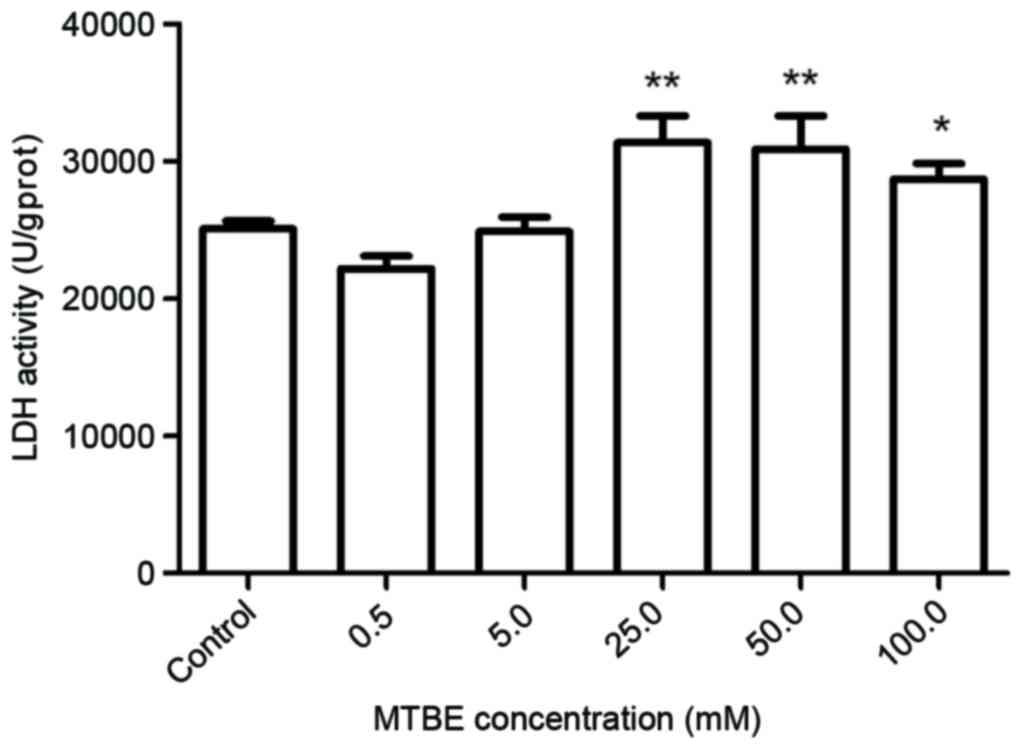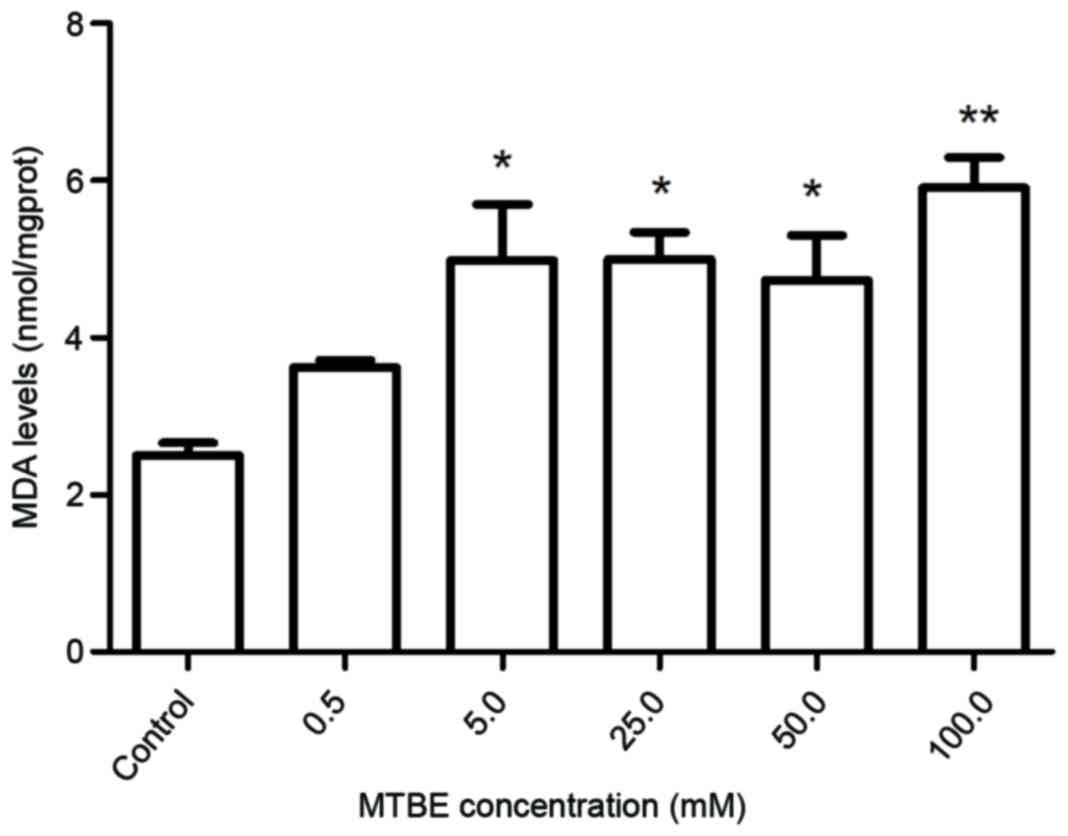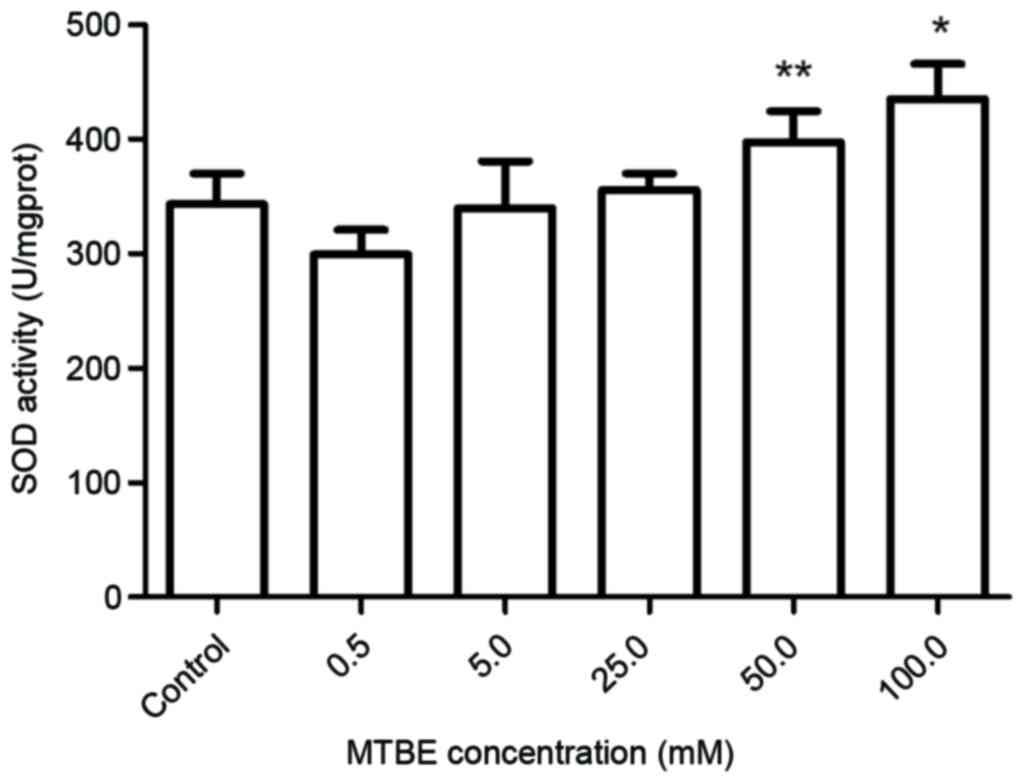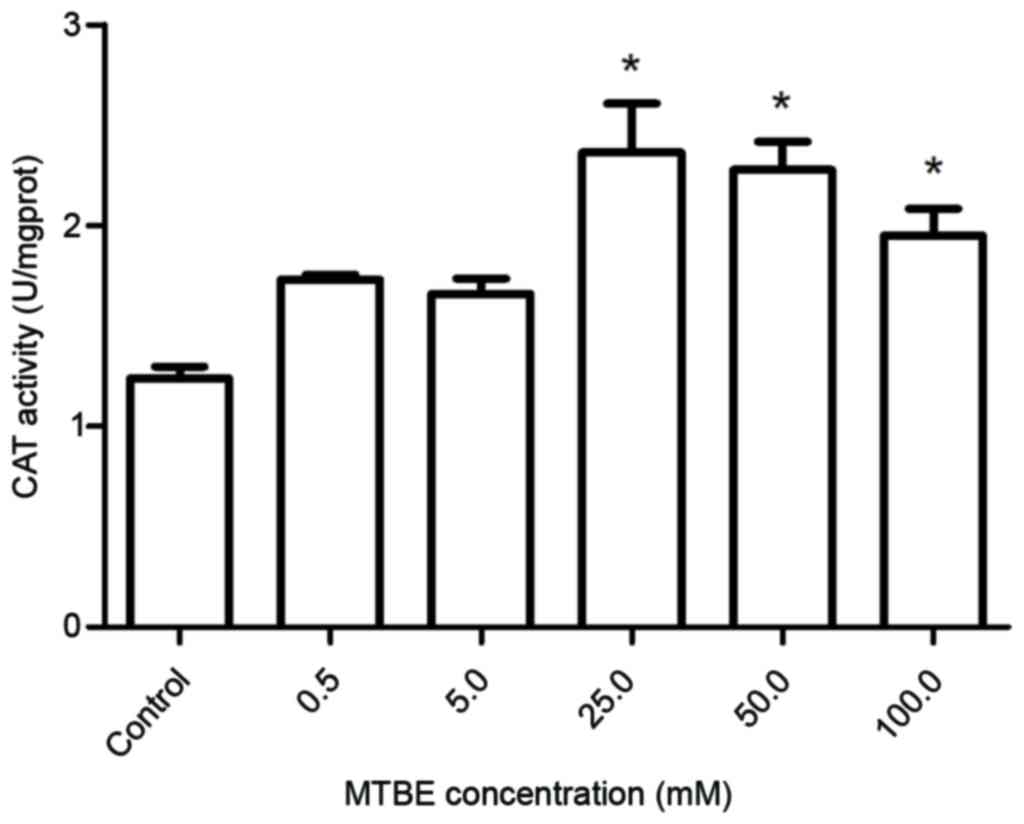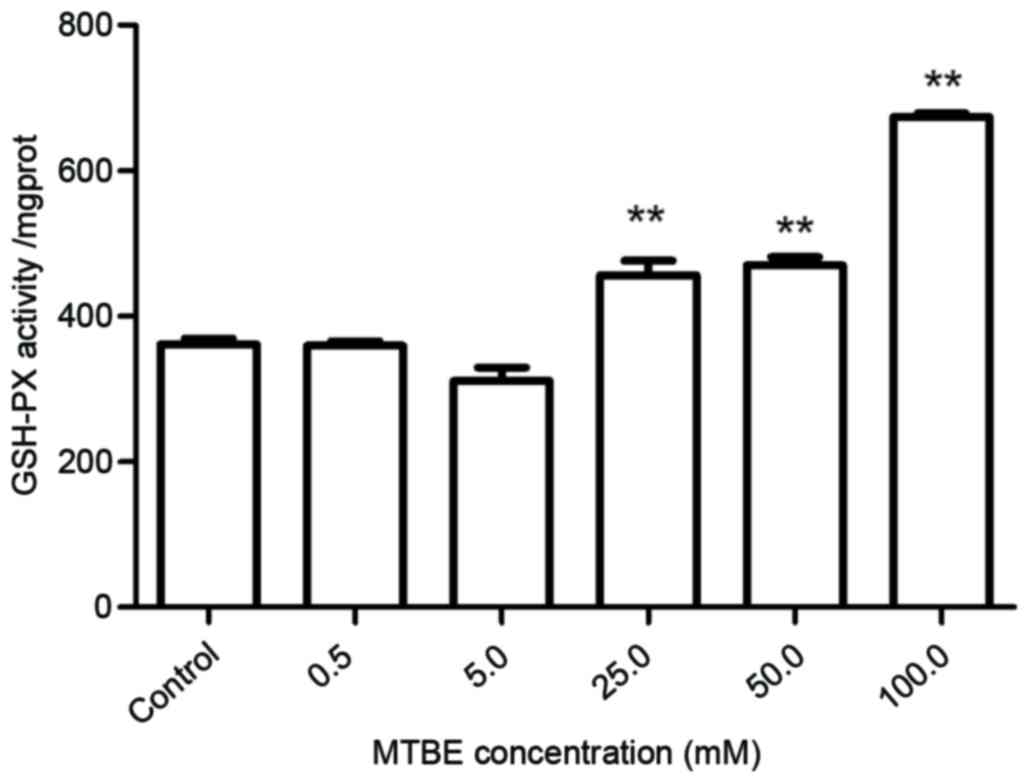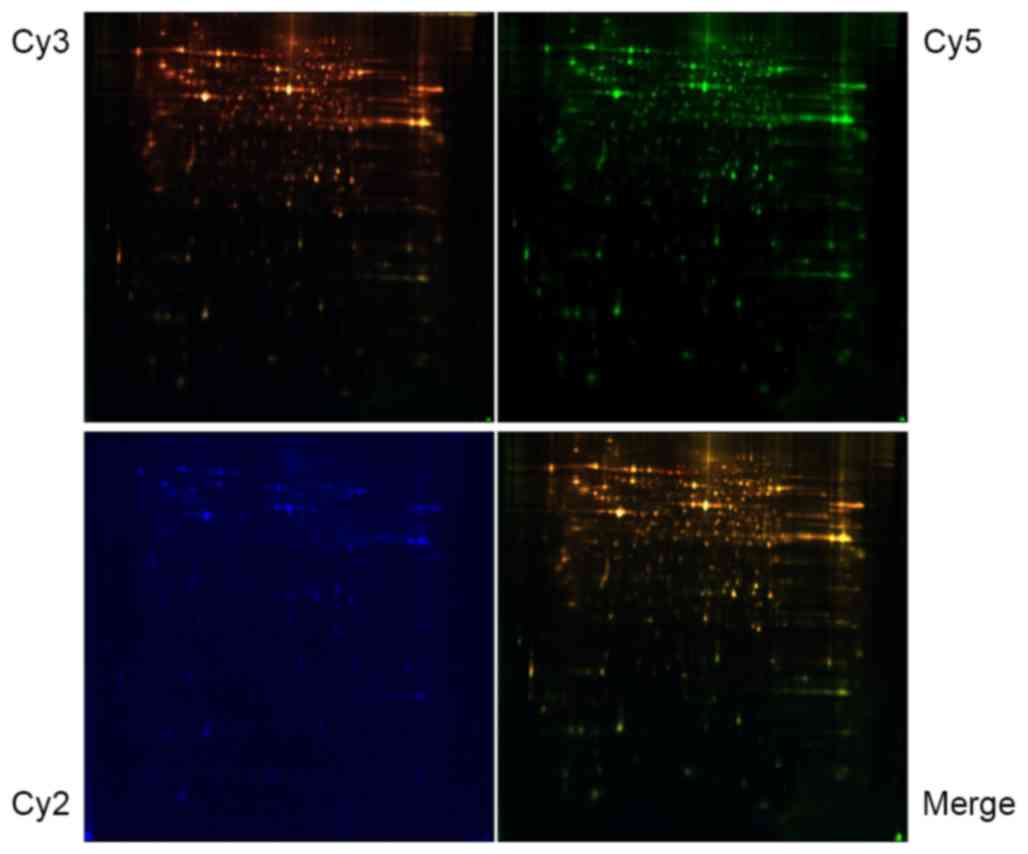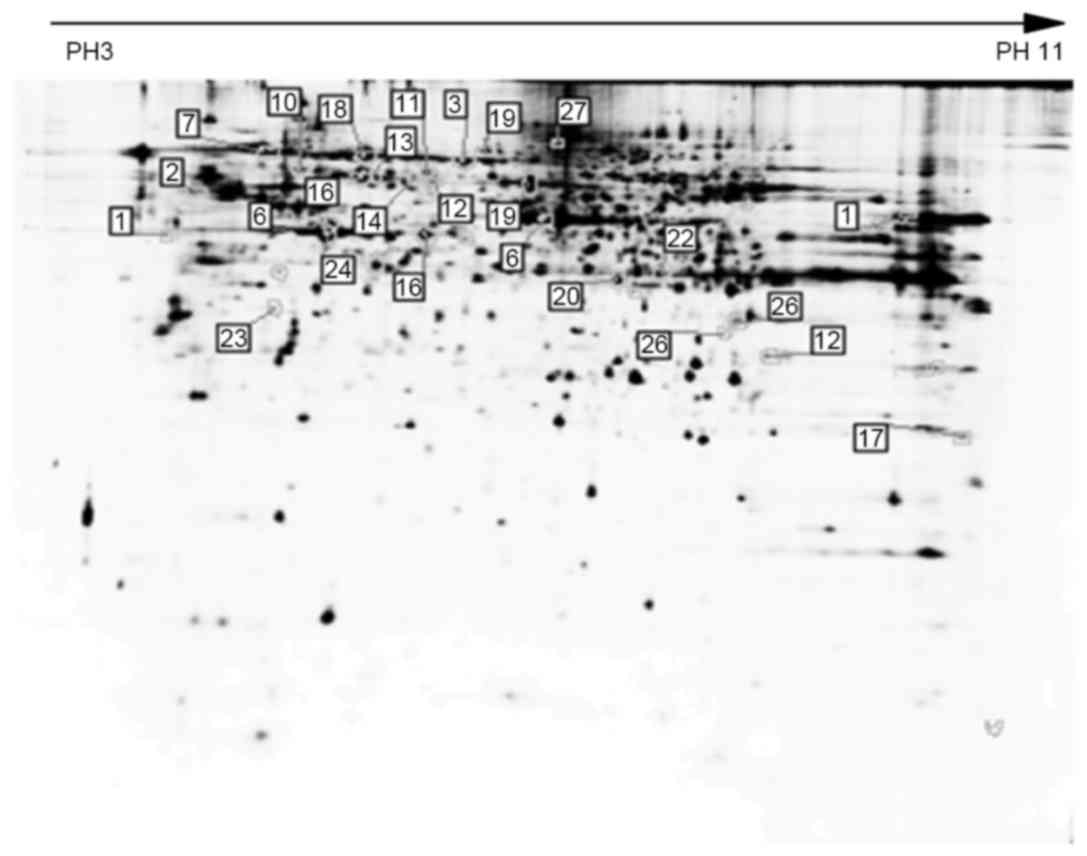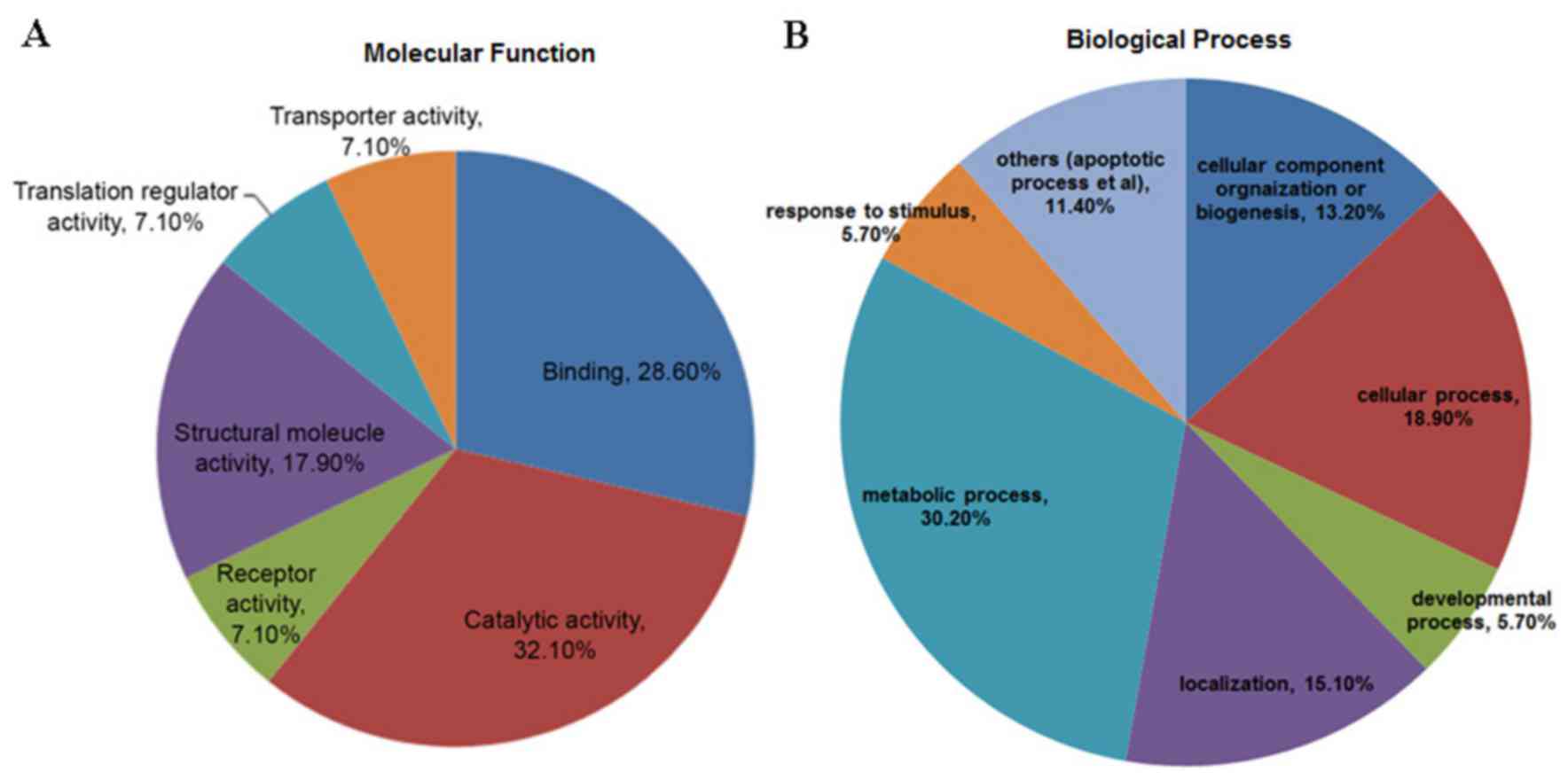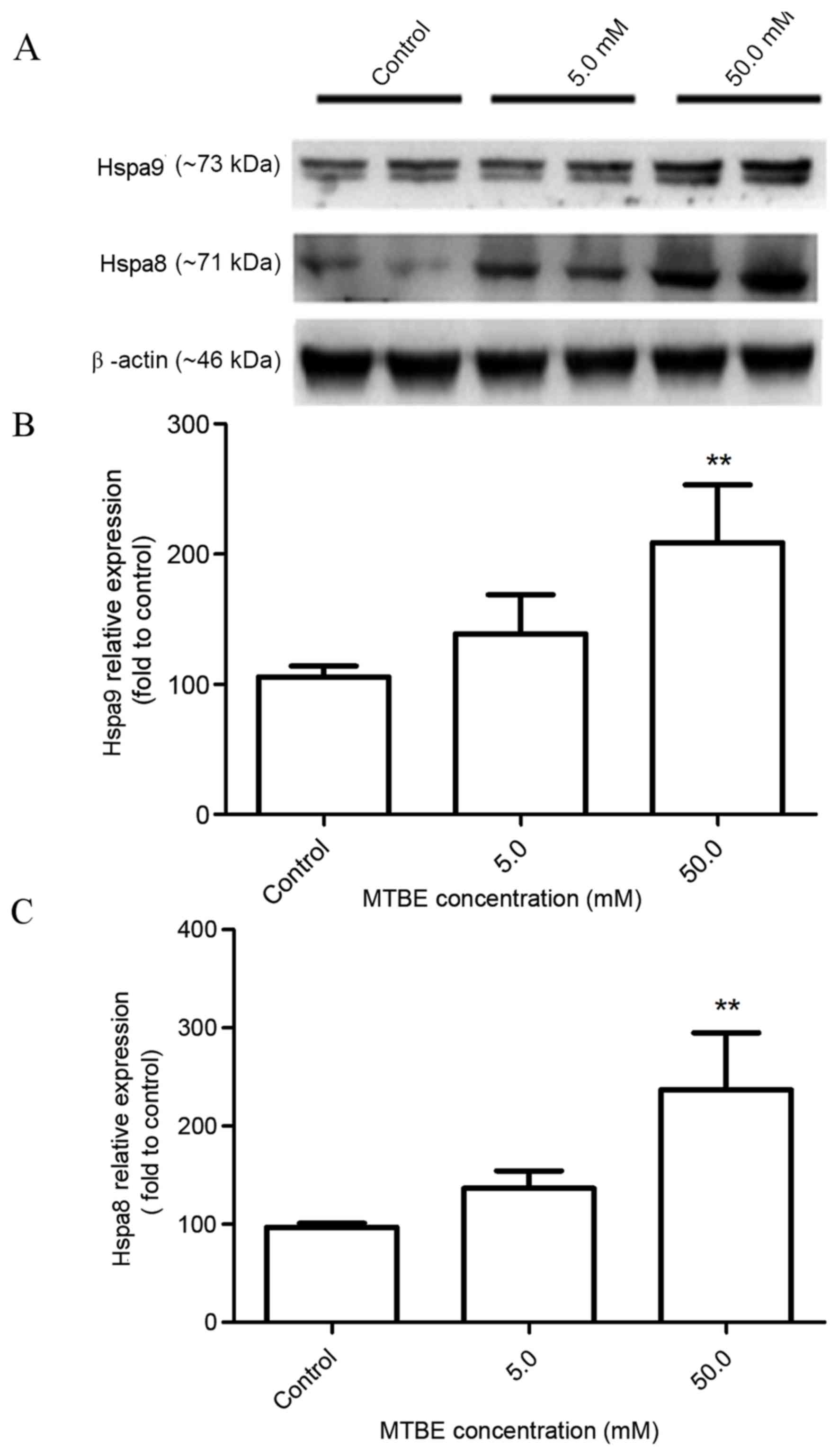|
1
|
Mehlman MA: Misclassification of
carcinogenic methyl tertiary butyl ether (MTBE) by the National
Toxicology Program Board: Smokescreen in, science out? Arch Environ
Health. 55:73–74. 2000. View Article : Google Scholar : PubMed/NCBI
|
|
2
|
Ahmed FE: Toxicology and human health
effects following exposure to oxygenated or reformulated gasoline.
Toxicol Lett. 123:89–113. 2001. View Article : Google Scholar : PubMed/NCBI
|
|
3
|
Phillips S, Palmer RB and Brody A:
Epidemiology, toxicokinetics, and health effects of methyl
tert-butyl ether (MTBE). J Med Toxicol. 4:115–126. 2008. View Article : Google Scholar : PubMed/NCBI
|
|
4
|
Ayotte JD, Argue DM, McGarry FJ, Degnan
JR, Hayes L, Flanagan SM and Helsel DR: Methyl tert-butyl ether
(MTBE) in public and private wells in New Hampshire: Occurrence,
factors, and possible implications. Environ Sci Technol.
42:677–684. 2008. View Article : Google Scholar : PubMed/NCBI
|
|
5
|
Hakkola MA and Saarinen LH: Customer
exposure to gasoline vapors during refueling at service stations.
Appl Occup Environ Hyg. 15:677–680. 2000. View Article : Google Scholar : PubMed/NCBI
|
|
6
|
Lindstrom AB and Pleil JD: Alveolar breath
sampling and analysis to assess exposures to methyl tertiary butyl
ether (MTBE) during motor vehicle refueling. J Air Waste Manag
Assoc. 46:676–682. 1996. View Article : Google Scholar
|
|
7
|
Prah J, Ashley D, Blount B, Case M,
Leavens T, Pleil J and Cardinali F: Dermal, oral, and inhalation
pharmacokinetics of methyl tertiary butyl ether (MTBE) in human
volunteers. Toxicol Sci. 77:195–205. 2004. View Article : Google Scholar : PubMed/NCBI
|
|
8
|
Hong JY, Yang CS, Lee M, Wang YY, Huang
WQ, Tan Y, Patten CJ and Bondoc FY: Role of cytochromes P450 in the
metabolism of methyl tert-butyl ether in human livers. Arch
Toxicol. 71:266–269. 1997. View Article : Google Scholar : PubMed/NCBI
|
|
9
|
Shamsipur M, Beigi AA Miran, Teymouri M,
Poursaberi T, Mostafavi SM, Soleimani P, Chitsazian F and Tash SA:
Biotransformation of methyl tert-butyl ether by human cytochrome
P450 2A6. Biodegradation. 23:311–318. 2012. View Article : Google Scholar : PubMed/NCBI
|
|
10
|
Fiedler N, Kelly-McNeil K, Mohr S, Lehrer
P, Opiekun RE, Lee C, Wainman T, Hamer R, Weisel C, Edelberg R and
Lioy PJ: Controlled human exposure to methyl tertiary butyl ether
in gasoline: Symptoms, psychophysiologic and neurobehavioral
responses of self-reported sensitive persons. Environ Health
Perspect. 108:753–763. 2000. View Article : Google Scholar : PubMed/NCBI
|
|
11
|
Belpoggi F, Soffritti M, Filippini F and
Maltoni C: Results of long-term experimental studies on the
carcinogenicity of methyl tert-butyl ether. Ann N Y Acad Sci.
837:77–95. 1997. View Article : Google Scholar : PubMed/NCBI
|
|
12
|
Zhou W, Yuan D, Huang G, Zhang H and Ye S:
Mutagenicity of methyl tertiary butyl ether. J Environ Pathol
Toxicol Oncol. 19:35–39. 2000.PubMed/NCBI
|
|
13
|
McGregor D: Methyl tertiary-butyl ether:
Studies for potential human health hazards. Crit Rev Toxicol.
36:319–358. 2006. View Article : Google Scholar : PubMed/NCBI
|
|
14
|
Li D, Yin D and Han X: Methyl tert-butyl
ether (MTBE)-induced cytotoxicity and oxidative stress in isolated
rat spermatogenic cells. J Appl Toxicol. 27:10–17. 2007. View Article : Google Scholar : PubMed/NCBI
|
|
15
|
Li DM and Han XD: Evaluation of toxicity
of methyl tert-butyl ether (MTBE) on mouse spermatogenic cells in
vitro. Toxicol Ind Health. 22:291–299. 2006. View Article : Google Scholar : PubMed/NCBI
|
|
16
|
Iavicoli I, Carelli G, Ardito R, Cittadini
A and Sgambato A: Methyl-tertiary-butyl ether (MTBE) inhibits
growth and induces cell transformation in rodent fibroblasts.
Anticancer Res. 22:2173–2177. 2002.PubMed/NCBI
|
|
17
|
Chen CS, Hseu YC, Liang SH, Kuo JY and
Chen SC: Assessment of genotoxicity of methyl-tert-butyl ether,
benzene, toluene, ethylbenzene, and xylene to human lymphocytes
using comet assay. J Hazard Mater. 153:351–356. 2008. View Article : Google Scholar : PubMed/NCBI
|
|
18
|
Everds NE, Snyder PW, Bailey KL, Bolon B,
Creasy DM, Foley GL, Rosol TJ and Sellers T: Interpreting stress
responses during routine toxicity studies: A review of the biology,
impact, and assessment. Toxicol Pathol. 41:560–614. 2013.
View Article : Google Scholar : PubMed/NCBI
|
|
19
|
Li D, Liu Q, Gong Y, Huang Y and Han X:
Cytotoxicity and oxidative stress study in cultured rat Sertoli
cells with methyl tert-butyl ether (MTBE) exposure. Reprod Toxicol.
27:170–176. 2009. View Article : Google Scholar : PubMed/NCBI
|
|
20
|
Huang QY and Huang HQ: Differential
expression profile of membrane proteins in zebrafish (Danio rerio)
brain exposed to methyl parathion. Proteomics. 11:3743–3756. 2011.
View Article : Google Scholar : PubMed/NCBI
|
|
21
|
Merrick BA and Witzmann FA: The role of
toxicoproteomics in assessing organ specific toxicity. EXS.
99:367–400. 2009.PubMed/NCBI
|
|
22
|
Nihlén A, Löf A and Johanson G: Controlled
ethyl tert-butyl ether (ETBE) exposure of male volunteers. I.
Toxicokinetics. Toxicol Sci. 46:1–10. 1998. View Article : Google Scholar : PubMed/NCBI
|
|
23
|
Krayl M, Benndorf D, Loffhagen N and Babel
W: Use of proteomics and physiological characteristics to elucidate
ecotoxic effects of methyl tert-butyl ether in Pseudomonas putida
KT2440. Proteomics. 3:1544–1552. 2003. View Article : Google Scholar : PubMed/NCBI
|
|
24
|
Mosmann T: Rapid colorimetric assay for
cellular growth and survival: Application to proliferation and
cytotoxicity assays. J Immunol Methods. 65:55–63. 1983. View Article : Google Scholar : PubMed/NCBI
|
|
25
|
Grant RL, Yao C, Gabaldon D and Acosta D:
Evaluation of surfactant cytotoxicity potential by primary cultures
of ocular tissues: I. Characterization of rabbit corneal epithelial
cells and initial injury and delayed toxicity studies. Toxicology.
76:153–176. 1992. View Article : Google Scholar : PubMed/NCBI
|
|
26
|
Mihara M and Uchiyama M: Determination of
malonaldehyde precursor in tissues by thiobarbituric acid test.
Anal Biochem. 86:271–278. 1978. View Article : Google Scholar : PubMed/NCBI
|
|
27
|
Bradford MM: A rapid and sensitive method
for the quantitation of microgram quantities of protein utilizing
the principle of protein-dye binding. Anal Biochem. 72:248–254.
1976. View Article : Google Scholar : PubMed/NCBI
|
|
28
|
Mi H, Muruganujan A and Thomas PD: PANTHER
in 2013: Modeling the evolution of gene function, and other gene
attributes, in the context of phylogenetic trees. Nucleic Acids
Res. 41(Database issue): D377–D386. 2013.PubMed/NCBI
|
|
29
|
Esterbauer H, Schaur RJ and Zollner H:
Chemistry and biochemistry of 4-hydroxynonenal, malonaldehyde and
related aldehydes. Free Radic Biol Med. 11:81–128. 1991. View Article : Google Scholar : PubMed/NCBI
|
|
30
|
Tonge R, Shaw J, Middleton B, Rowlinson R,
Rayner S, Young J, Pognan F, Hawkins E, Currie I and Davison M:
Validation and development of fluorescence two-dimensional
differential gel electrophoresis proteomics technology. Proteomics.
1:377–396. 2001. View Article : Google Scholar : PubMed/NCBI
|
|
31
|
Vainiotalo S and Ruonakangas A: Tank truck
driver exposure to vapors from oxygenated or reformulated gasolines
during loading and unloading. Am Ind Hyg Assoc J. 60:518–525. 1999.
View Article : Google Scholar : PubMed/NCBI
|
|
32
|
Lin CW, Chiang SB and Lu SJ: Investigation
of MTBE and aromatic compound concentrations at a gas service
station. Environ Monit Assess. 105:327–339. 2005. View Article : Google Scholar : PubMed/NCBI
|
|
33
|
Belpoggi F, Soffritti M and Maltoni C:
Methyl-tertiary-butyl ether (MTBE)-a gasoline additive-causes
testicular and lymphohaematopoietic cancers in rats. Toxicol Ind
Health. 11:119–149. 1995. View Article : Google Scholar : PubMed/NCBI
|
|
34
|
Bird MG, Burleigh-Flayer HD, Chun JS,
Douglas JF, Kneiss JJ and Andrews LS: Oncogenicity studies of
inhaled methyl tertiary-butyl ether (MTBE) in CD-1 mice and F-344
rats. J Appl Toxicol. 17 Suppl 1:S45–S55. 1997. View Article : Google Scholar : PubMed/NCBI
|
|
35
|
Clegg ED, Cook JC, Chapin RE, Foster PM
and Daston GP: Leydig cell hyperplasia and adenoma formation:
Mechanisms and relevance to humans. Reprod Toxicol. 11:107–121.
1997. View Article : Google Scholar : PubMed/NCBI
|
|
36
|
Knox P, Uphill PF, Fry JR, Benford J and
Balls M: The FRAME multicentre project on in vitro cytotoxicology.
Food Chem Toxicol. 24:457–463. 1986. View Article : Google Scholar : PubMed/NCBI
|
|
37
|
Putnam KP, Bombick DW and Doolittle DJ:
Evaluation of eight in vitro assays for assessing the cytotoxicity
of cigarette smoke condensate. Toxicol In Vitro. 16:599–607. 2002.
View Article : Google Scholar : PubMed/NCBI
|
|
38
|
Li D, Yuan C, Gong Y, Huang Y and Han X:
The effects of methyl tert-butyl ether (MTBE) on the male rat
reproductive system. Food Chem Toxicol. 46:2402–2408. 2008.
View Article : Google Scholar : PubMed/NCBI
|
|
39
|
Ohkawa H, Ohishi N and Yagi K: Assay for
lipid peroxides in animal tissues by thiobarbituric acid reaction.
Anal Biochem. 95:351–358. 1979. View Article : Google Scholar : PubMed/NCBI
|
|
40
|
Li L, Hu F, Wang C and Wang X:
Enantioselective induction of oxidative stress by acetofenate in
rat PC12 cells. J Environ Sci (China). 22:1980–1986. 2010.
View Article : Google Scholar : PubMed/NCBI
|
|
41
|
Jomova K and Valko M: Advances in
metal-induced oxidative stress and human disease. Toxicology.
283:65–87. 2011. View Article : Google Scholar : PubMed/NCBI
|
|
42
|
Murthy MR, Reid TJ III, Sicignano A,
Tanaka N and Rossmann MG: Structure of beef liver catalase. J Mol
Biol. 152:465–499. 1981. View Article : Google Scholar : PubMed/NCBI
|
|
43
|
Muse KE, Oberley TD, Sempf JM and Oberley
LW: Immunolocalization of antioxidant enzymes in adult hamster
kidney. Histochem J. 26:734–753. 1994. View Article : Google Scholar : PubMed/NCBI
|
|
44
|
Dowling VA and Sheehan D: Proteomics as a
route to identification of toxicity targets in environmental
toxicology. Proteomics. 6:5597–5604. 2006. View Article : Google Scholar : PubMed/NCBI
|
|
45
|
Ohta T, Iijima K, Miyamoto M, Nakahara I,
Tanaka H, Ohtsuji M, Suzuki T, Kobayashi A, Yokota J, Sakiyama T,
et al: Loss of Keap1 function activates Nrf2 and provides
advantages for lung cancer cell growth. Cancer Res. 68:1303–1309.
2008. View Article : Google Scholar : PubMed/NCBI
|
|
46
|
Nguyen T, Nioi P and Pickett CB: The
Nrf2-antioxidant response element signaling pathway and its
activation by oxidative stress. J Biol Chem. 284:13291–13295. 2009.
View Article : Google Scholar : PubMed/NCBI
|
|
47
|
Kaspar JW, Niture SK and Jaiswal AK:
Nrf2:INrf2 (Keap1) signaling in oxidative stress. Free Radic Biol
Med. 47:1304–1309. 2009. View Article : Google Scholar : PubMed/NCBI
|
|
48
|
Miyamoto N, Izumi H, Miyamoto R, Bin H,
Kondo H, Tawara A, Sasaguri Y and Kohno K: Transcriptional
regulation of activating transcription factor 4 under oxidative
stress in retinal pigment epithelial ARPE-19/HPV-16 cells. Invest
Ophthalmol Vis Sci. 52:1226–1234. 2011. View Article : Google Scholar : PubMed/NCBI
|
|
49
|
Gonda RL, Garlena RA and Stronach B:
Drosophila heat shock response requires the JNK pathway and
phosphorylation of mixed lineage kinase at a conserved
serine-proline motif. PLoS One. 7:e423692012. View Article : Google Scholar : PubMed/NCBI
|
|
50
|
Beere HM: ‘The stress of dying’: The role
of heat shock proteins in the regulation of apoptosis. J Cell Sci.
117:2641–2651. 2004. View Article : Google Scholar : PubMed/NCBI
|
|
51
|
Dorion S and Landry J: Activation of the
mitogen-activated protein kinase pathways by heat shock. Cell
Stress Chaperones. 7:200–206. 2002. View Article : Google Scholar : PubMed/NCBI
|
|
52
|
Wadhwa R, Kaul SC, Sugimoto Y and Mitsui
Y: Induction of cellular senescence by transfection of cytosolic
mortalin cDNA in NIH 3T3 cells. J Biol Chem. 268:22239–22242.
1993.PubMed/NCBI
|
|
53
|
Kaula SC, Reddelb RR, Sugiharac T, Mitsuia
Y and Wadhwac R: Inactivation of p53 and life span extension of
human diploid fibroblasts by mot-2. FEBS Lett. 474:159–164. 2000.
View Article : Google Scholar : PubMed/NCBI
|
|
54
|
E Q, Liu X, Liu Y, Liu W and Zuo J:
Over-expression of GRP75 inhibits liver injury induced by oxidative
damage. Acta Biochim Biophys Sin (Shanghai). 45:129–134. 2013.
View Article : Google Scholar : PubMed/NCBI
|
|
55
|
Daugaard M, Rohde M and Jäättelä M: The
heat shock protein 70 family: Highly homologous proteins with
overlapping and distinct functions. FEBS Lett. 581:3702–3710. 2007.
View Article : Google Scholar : PubMed/NCBI
|
|
56
|
Basu S, Binder RJ, Suto R, Anderson KM and
Srivastava PK: Necrotic but not apoptotic cell death releases heat
shock proteins, which deliver a partial maturation signal to
dendritic cells and activate the NF-kappa B pathway. Int Immunol.
12:1539–1546. 2000. View Article : Google Scholar : PubMed/NCBI
|
|
57
|
Dastoor Z and Dreyer J: Nuclear
translocation and aggregate formation of heat shock cognate protein
70 (Hsc70) in oxidative stress and apoptosis. J Cell Sci.
113:2845–2854. 2000.PubMed/NCBI
|
|
58
|
Lagunas L, Bradbury CM, Laszlo A, Hunt CR
and Gius D: Indomethacin and ibuprofen induce Hsc70 nuclear
localization and activation of the heat shock response in HeLa
cells. Biochem Biophys Res Commun. 313:863–870. 2004. View Article : Google Scholar : PubMed/NCBI
|
|
59
|
José-Enériz ES, Román-Gómez J, Cordeu L,
Ballestar E, Gárate L, Andreu EJ, Isidro I, Guruceaga E,
Jiménez-Velasco A, Heiniger A, et al: BCR-ABL1-induced expression
of HSPA8 promotes cell survival in chronic myeloid leukaemia. Br J
Haematol. 142:571–582. 2008. View Article : Google Scholar : PubMed/NCBI
|
|
60
|
Voisin PJ, Pardue S, Macouillard F, Yehia
G, Labouesse J and Morrison-Bogorad M: Differential expression of
heat shock 70 proteins in primary cultures from rat cerebellum.
Brain Res. 739:215–234. 1996. View Article : Google Scholar : PubMed/NCBI
|
|
61
|
Nirdé P, Derocq D, Maynadier M, Chambon M,
Basile I, Gary-Bobo M and Garcia M: Heat shock cognate 70 protein
secretion as a new growth arrest signal for cancer cells. Oncogene.
29:117–127. 2010. View Article : Google Scholar : PubMed/NCBI
|
|
62
|
Friha I, Bradai M, Johnson D, Hilal N,
Loukil S, Ben Amor F, Feki F, Han J, Isoda H and Sayadi S:
Treatment of textile wastewater by submerged membrane bioreactor:
In vitro bioassays for the assessment of stress response elicited
by raw and reclaimed wastewater. J Environ Manage. 160:184–192.
2015. View Article : Google Scholar : PubMed/NCBI
|
|
63
|
Bradai M, Han J, El Omri A, Funamizu N,
Sayadi S and Isoda H: Cytotoxic effect of linear alkylbenzene
sulfonate on human intestinal Caco-2 cells: Associated biomarkers
for risk assessment. Environ Sci Pollut Res Int. 21:10840–10851.
2014. View Article : Google Scholar : PubMed/NCBI
|















